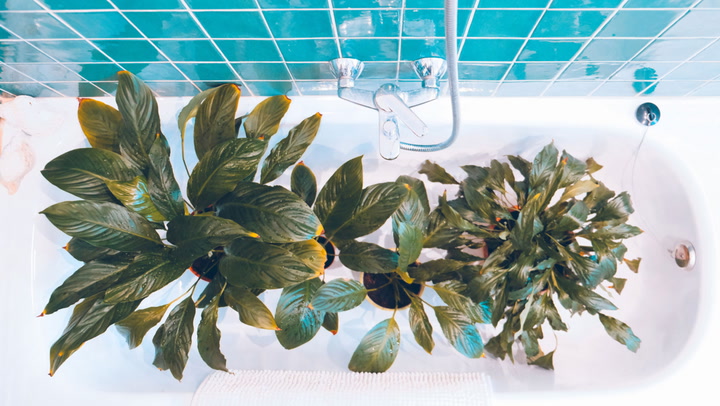Here are five ways to avoid coming home to wilting plants — or worse.
Fact checked by
Jillian Dara
You’ve got your hotel reserved, your flight ticket in hand, and your bags packed. Yes, you’re ready to go on vacation, but there’s just the matter of one teeny, tiny thing: your plants.
Our little green friends tend to be the last on the list of considerations when prepping for vacation; however, even if you’re leaving for just a few days, it’s important to make a plant plan.
Here are a few ways to help you prep your plants for your vacation time, according to the experts.
You May Need to Arrange for a Plant-Sitter
Like your kids or your pets, your plants may need attention too, according to Val Talbert, owner of Tal & Bert, a company that sells both succulents and stunning planters, vessels, and home decor made from concrete and crystals.
“If you’re going away on an extended vacation, look into having someone care for your plants,” she said. If it’s less than a week, you may be okay. Nevertheless, Talbert added, “make sure your plants get a little love before you leave so they won’t be thirsty when you’re away.”
Talbert explained that many plants can go up to eight to ten days between waterings, meaning vacations lasting ten days or longer may require a sitter. “However, it is important to know the soil requirements for each plant to truly determine when your plants would require a sitter,” Talbert noted.
Set the Right Temperature
We’re sure you don’t like to be too hot or too cold, and neither do your plants.
“One thing most people overlook when leaving their plants for vacation is making sure their home is at a comfortable temperature,” said Morgan Danielle, owner of Revive and Bloom, a chic brand dedicated to quality plants, home decor, and design services. “Whether it’s summer or winter, you need to make sure your home stays at a temperature that is not too hot or too cold as both conditions are detrimental for plants.”
Invest in Self-Watering Devices
Another way Danielle suggests keeping your plants healthy and hydrated while you’re away is to invest in self-watering tools.
“There are old-school water globes for plants that you can use if you will be worried about leaving your plants for more than a week,” Danielle said. “These are helpful in providing a small amount of water to the plant for up to two weeks.”
Want to go more high-tech? Talbert suggests investing in self-watering pots as well.
“Self-watering pots are popular right now with many stylish options,” Talbert said. “Moreover, if you are unable to get a sitter, there’s an option to use peat moss as ‘mulch’ for your plants. This should be thoroughly watered, and it will help keep the soil hydrated for a couple of weeks. This method will also minimize the amount of water your plants would need.”

Keep Things Shady
Regarding sun exposure, both Danielle and Talbert agree to keep plants in at least filtered sunlight.
“I would move your plants to indirect sunlight or shade. Leaving them in direct sunlight while unattended could cause harm to your plant,” Talbert said. “Furthermore, it’s important to note that if you water your plants before you leave, they still need sufficient light to process the watering. You don’t want to come back to wilting plants.”
If You’re a Frequent Traveler, Reconsider Your Plant Choices
If you’re someone who finds yourself in an airport more often than your house, it may be time to reconsider your plant choices.
“If you travel a lot, I would suggest staying away from high-maintenance plants as they will struggle to thrive,” Talbert said. “Two of the hardiest plants I would recommend are snake plants and ZZ plants. A ponytail palm and yucca are also great choices for house plants for those that travel often as these are easy-care options requiring minimal maintenance.”
Danielle echoed this advice with a few additions, noting, “If you travel often, I would suggest some low-maintenance plants such as ZZs, Chinese evergreens, pothos, sansevierias, and peperomias.”





